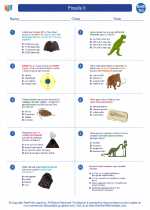Cell Membrane
The cell membrane, also known as the plasma membrane, is a vital structure that encloses the cytoplasm of a cell and separates the interior of the cell from the external environment. It is a selectively permeable barrier, allowing certain substances to enter and exit the cell while restricting the passage of others. The cell membrane plays a crucial role in maintaining the cell's internal environment and facilitating various cellular processes.
Structure of the Cell Membrane
The cell membrane is primarily composed of a phospholipid bilayer, with embedded proteins, cholesterol, and carbohydrates. The phospholipid bilayer consists of two layers of phospholipid molecules, with hydrophilic (water-attracting) heads facing outward and hydrophobic (water-repelling) tails facing inward. This structure gives the membrane its characteristic fluidity and flexibility.
Functions of the Cell Membrane
- Regulating Transport: The cell membrane controls the entry and exit of substances such as ions, nutrients, and waste products.
- Cell Signaling: It facilitates communication between cells through receptor proteins that recognize and bind to specific signaling molecules.
- Cell Adhesion: It allows cells to adhere to one another and to extracellular matrix through specialized proteins.
- Structural Support: The cell membrane helps maintain the shape of the cell and provides structural support.
- Protection: It acts as a barrier, protecting the cell from potentially harmful substances in the external environment.
Study Guide
Here are some key points to focus on while studying the cell membrane:
- Understand the structure of the cell membrane, including the composition of the phospholipid bilayer and the role of proteins, cholesterol, and carbohydrates.
- Learn about the functions of the cell membrane and how it contributes to the overall functioning of the cell.
- Explore the concept of selective permeability and the mechanisms by which substances move across the cell membrane, such as diffusion, osmosis, and active transport.
- Examine the role of membrane proteins in cell signaling, cell adhesion, and transport processes.
- Consider how the structure and function of the cell membrane relate to various cellular processes, such as cell-cell communication and maintaining homeostasis.
Understanding the cell membrane is essential for grasping the fundamentals of cell biology and its significance in the broader context of living organisms.
.


